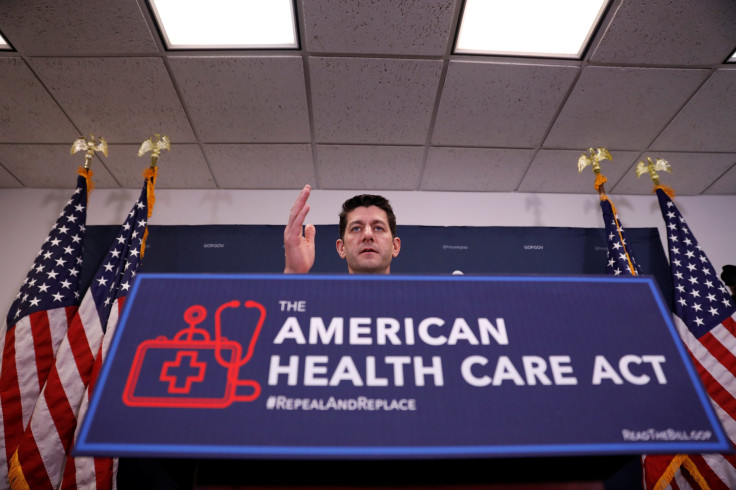Where Will Health Care Cost The Most? 'Trumpcare' Will Be Most Expensive In These Cities, Study Says

Health insurance premiums under the American Health Care Act—also known as "Trumpcare," "Ryancare" and, in some frustrated conservative circles, "Obamacare Lite"—may rise by between 15 and 20 percent above the levels under current law in the next one or two years, according to the nonpartisan Congressional Budget Office, but those changes could vary substantially by city.
Yuma, Arizona, and Anchorage, Alaska, would see the highest premium increases under the new health insurance plan, according to a study released Monday by the consumer finance site WalletHub. The average Affordable Care Act premium subsidy in both cities was close to $13,000, but would fall to $5,000 under Trumpcare. Those two municipalities were followed by Syracuse, New York, and Reading, Pennsylvania, which would see their average subsidies drop to $4,000 from more than $10,000.
Read: Healthcare Plan Unpopular: Only 24% Support Trumpcare Bill Over Obamacare
The study relied on calculations of the cities’ average premium tax credits using those received by two-person households earning the median income and the amounts they’d get in each of the municipalities’ 10 most populous zip codes under Obamacare, which calculates subsidies for enrollees based on their incomes, their ages and the cost of coverage where they live. The 2010 law allows consumers on the insurance marketplace making between 100 and 400 percent of the poverty level to cut down their premiums, with enrollees paying more as their incomes get higher.
Approximately 85 percent of Affordable Care Act enrollments, or 9.4 million people, received subsidies as of March 2016, with the average credit coming to about $291 per month, or close to $3,500 annually, according to the Centers for Medicare and Medicaid Services.
But the federal government’s calculation of those premiums varies widely by state and even county, with recipients in regions like southern Georgia winning thousands more in subsidies than people with similar incomes in places like western Pennsylvania and eastern Tennessee, as the Washington Post pointed out in 2013. That’s one reason why although subsidy recipients 100 cities would, on average, lose out, according to WalletHub’s findings, enrollees in 357 cities would gain higher subsidies under the American Health Care Act. The cities benefitting the most from the switch were mostly affluent ones, such as Newton, Massachusetts; Norwalk, Connecticut; Newport Beach, California, and Warwick, Rhode Island.
Read: How Many People Will Lose Coverage Under Trumpcare? CBO, White House Estimates Differ
Under Trumpcare, premium tax credits would vary with age—not income or location. This adjustment, the Center on Budget and Policy Priorities, a progressive think tank, found, would result in higher costs for many of President Donald Trump’s supporters—older, lower-income enrollees in rural areas of Alaska, North Carolina, Alabama, West Virginia, Wyoming, Nebraska and Oklahoma.
© Copyright IBTimes 2024. All rights reserved.






















